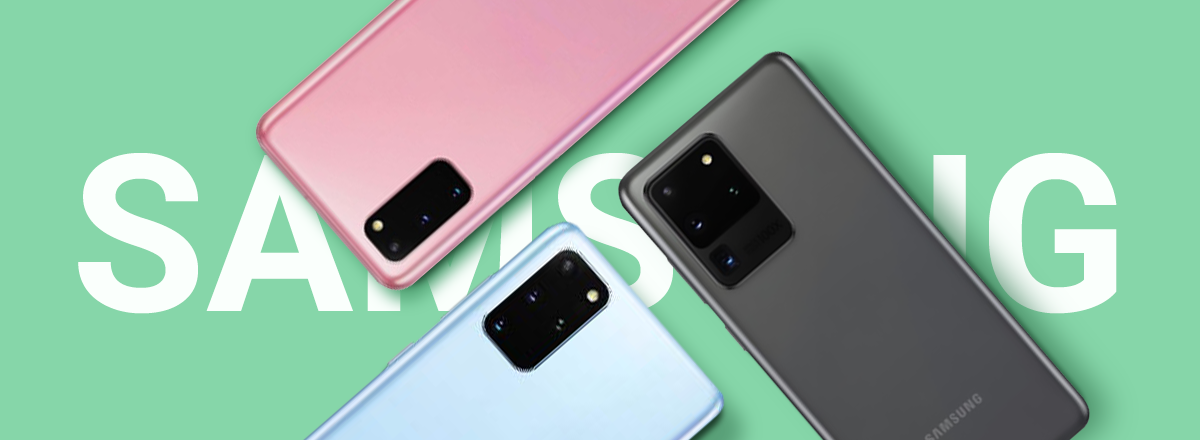Over the past few years, Samsung has been introducing new flagship smartphones in February, and this year was no exception. At the Galaxy Unpacked 2020 special event in San Francisco, the company showed three new models: the Galaxy S20, S20+, and S20 Ultra.
Samsung decided to change the serial number of the line right to the number 20, breaking the ten-year tradition of naming the flagship Galaxy smartphones.
What is the difference between the Galaxy S20, S20 +, and S20 Ultra anyway?
The lineup of Galaxy flagships in early 2020 includes three models, just like it did last year. But Samsung decided to abandon the more affordable and compact smartphone, and the Galaxy S20 will take its place. Like last year, the plus version is billed as a top-end device for most users. But it’s the model with the prefix Ultra that will be the most functional flagship of the company.
Design
The design of Samsung’s new flagship managed to appear on the Internet long before its announcement. Therefore, all the innovations in the design were not a surprise during the presentation. All three models have the same shape and design, with slight differences.
In the Galaxy S20, S20+, and S20 Ultra, Samsung has traditionally used the best practices from previous models. The design is a hybrid of the Galaxy S10 and Note 10. Almost the entire front panel of the new devices is a display, which in the S20 and S20+ now only slightly bends to the sides. The S20 Ultra has a slightly larger display.
The most visible changes in the design of the new smartphones are on the back of the phones. The company used a more massive block of main cameras. Moreover, it so happened that each phone’s dimensions increase depending on the position of the model in the lineup. Accordingly, the Galaxy S20 Ultra is the largest, while the S20+ and S20 are a bit more compact.
Display
Last year, Samsung updated the matrix type in flagship smartphones by introducing a Dynamic AMOLED panel with excellent color reproduction, deep black color, and right viewing angles. New models also use it, but this time, the frequency of its updates was increased to 120 Hz. It markedly increased the smoothness of the animation, especially when quickly scrolling through long lists. And, of course, playing dynamic games on such a screen is a pleasure.
All three models use the same Dynamic AMOLED matrices with support for 120 Hz and a maximum resolution of 3200×1400 pixels. Moreover, they also have the same aspect ratio of 20:9; the screen is more elongated in height. The main differences apply to the diagonal, and the Galaxy S20 is the most "compact" with 6.2 inches, the S20+ with 6.7 inches, and the S20 Ultra with 6.92 inches.
Cameras
Galaxy S20 and S20+ have an identical set of modules except for the presence of an additional DepthVision camera in a plus model, which measures the distance to objects and allows you to create a more realistic bokeh in portrait shots.
The Galaxy S20 Ultra received the most significant innovations in the main camera system, and it uses the main 108-megapixel wide-angle camera with ƒ/1.8 aperture, optical stabilization, phase, and laser autofocus. It also comes with Tetracell technology support.
All three smartphones support 8K video recording.
Fingerprint Scanner
All three models use an ultrasonic fingerprint scanner integrated directly into the display glass.
Audio
The S20, S20+, and S20 Ultra models became the first flagships in the Galaxy line to lost a 3.5 mm headphone jack. It will now gradually begin to disappear, even from more affordable Samsung smartphones. To connect headphones, the user has a choice between the USB Type-C port and the wireless connection via Bluetooth.
Fortunately, the external speakers for all three models remained stereo, while Samsung claims that they are tuned by AKG specialists and support Dolby Atmos technology.
Battery
The Galaxy S20 has a 4,000 mAh battery, the S20 + has 4,500 mAh, and the S20 Ultra has 5,000 mAh. They also have support for fast charging of up to 25 watts and up to 45 watts for the S20 Ultra. Also, all three devices can be used for reverse wireless charging if there is a need to charge any accessory, for example, a watch or headphones.
Galaxy S20, S20+, and S20 Ultra turned out to be exciting devices, the main emphasis of which is placed on new cameras and a screen refresh rate of 120 Hz.













